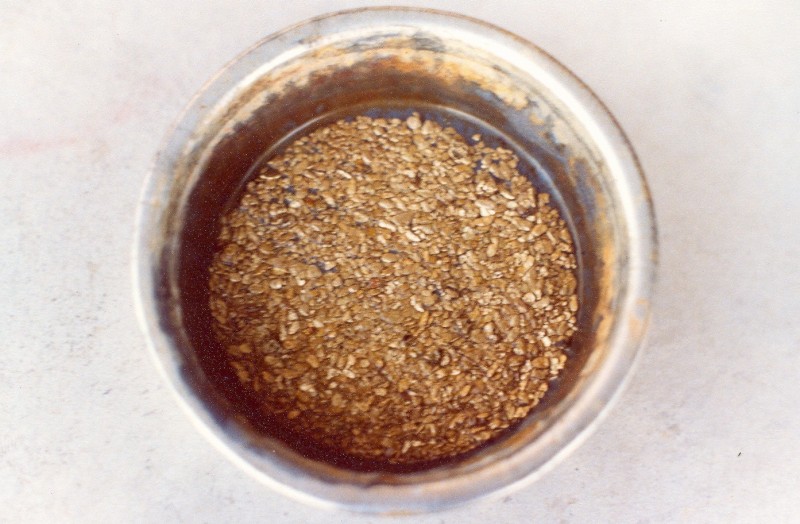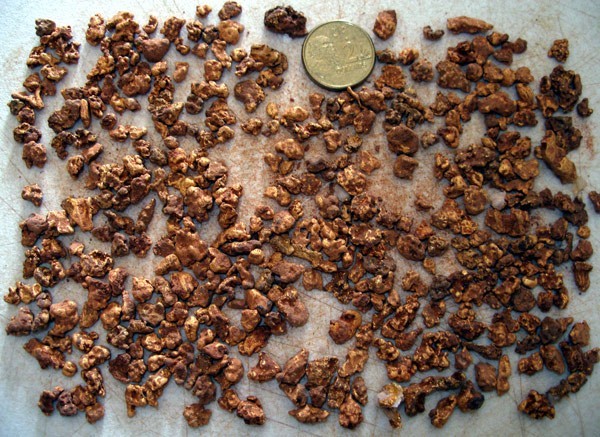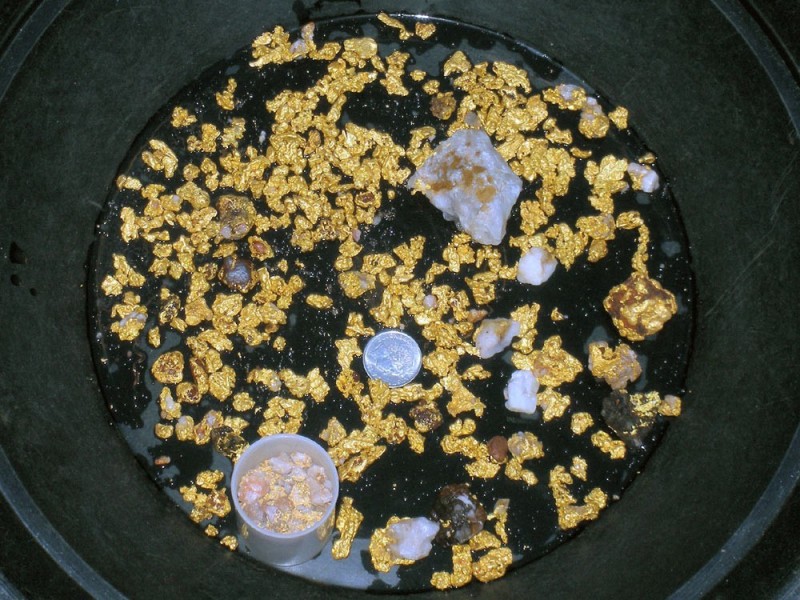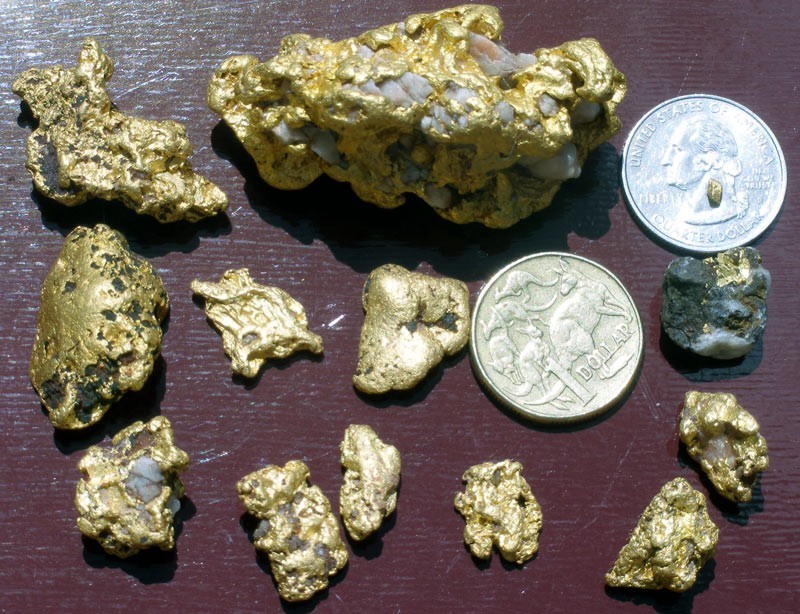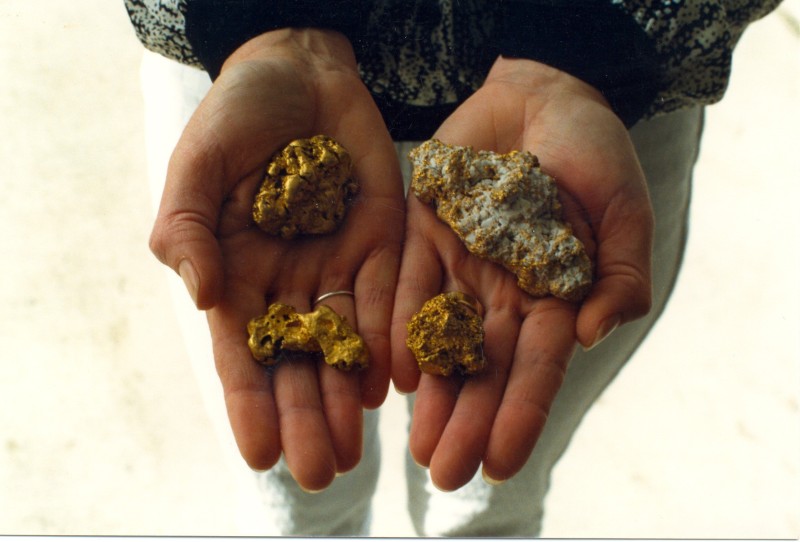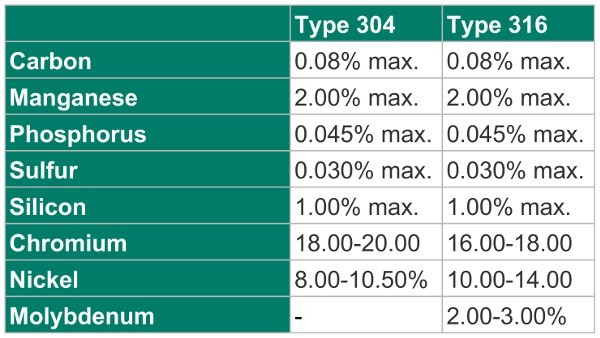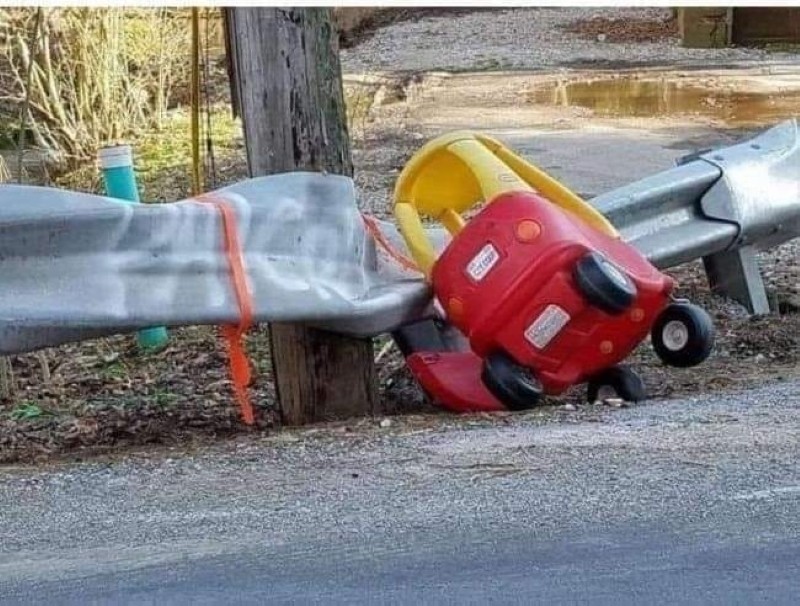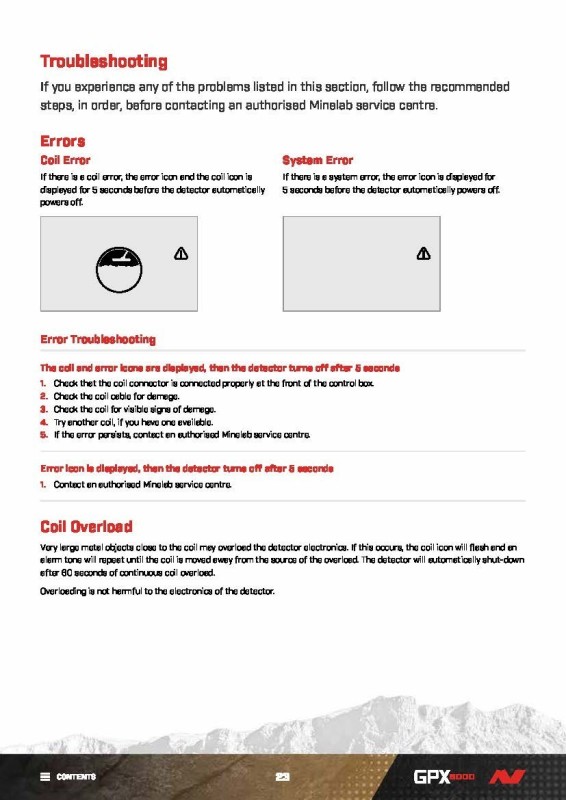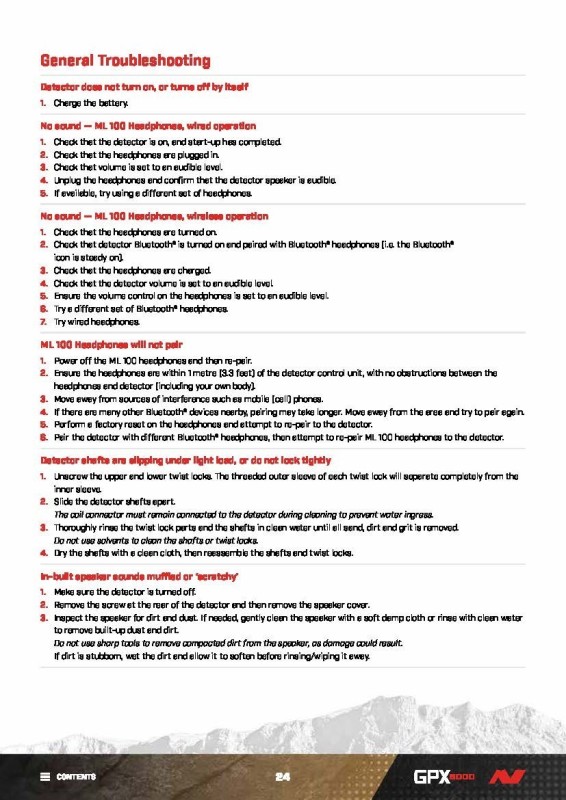-
Posts
1,951 -
Joined
-
Last visited
Content Type
Forums
Detector Prospector Home
Detector Database
Downloads
Everything posted by geof_junk
-
All the information posted here in for your post would take many lifetimes to acquire by yourself. A good LINK to read on coil size and depth. ..........Link........ Some examples below.
-
Depth, sensitivity, weight are not the major factor to consider, it is gold yield. Depth and sensitivity depends on size of gold being found. Note the old rule of thumb is that to double the depth you need 64 times more amplification ( therefor battery uses is massively increased) To a small degree depth can be increased by having a larger coil ( depth cuts out at the meter/yard mark...Doubling the coil size will not double the depth maybe 20% increase). So yield is your goal ..... Find the size and depth for the area you will detect and set your self up with a detector that will allow you to do the 8 hours ( or the time you detect for) that is comfortable, allows full concentration the whole time. From the feed back you have got and the selection you have asked for GPX-6000 or GPZ-7000 the best, is in favour of the 6000. If you make the wrong choice with the 6000 I am sure the ounce or two to swap would be found soon, providing your location is worth doing for returns (not fun) in no time.
-
NickW I got my first bit of gold (in a pan as a kid with Dad) over 60+ years ago, and have been detecting gold for 40+ years. I have included some gold photos of gold that I have found with old technology VLF and ML_3000 detectors with coils less than 11" wide. These nuggets are the most common size found even on remote virgin patches that I have found. Some of my bigger finds were specimens, I can remember more than 60 ounces of gold from less than ten of them them. As there is a good range of smaller gold in the following photos I would say you would be best to go for the GPX_6000 however if you get hooked on doing flogged deep ground or large deep nuggets I would then buy a second/backup detector with your finds and that would be the GPZ_7000 update when it comes out. The main thing is how you use the detector and the size of the gold you are chasseing.👍 It my birthday tomorrow and since that makes me nearly double your age my views are for an old timer so GPZ_7000 weight might be more acceptable for a young buck such as yourself.😁
-
Note that those ball bearing are made from non magnetic steel and would remove the ferrous effect on the coil. Austenitic steels, which contain 16 to 26 percent chromium and up to 35 percent nickel, usually have the highest corrosion resistance. They are not hardenable by heat treatment and are nonmagnetic. The most common type is the 18/8, or 304, grade, which contains 18 percent… In steel: Stainless steels.
-

We Need Tougher Plastics For Detectors & Coils
geof_junk replied to geof_junk's topic in Detector Prospector Forum
Up date. The driver was found under the influence. His mother has reprimanded him from raiding the lolly jar. 😢 -
If you have to guess the date try 1877, who can argue with you if the date can't be read. 😀 Pricing the 1877 Indian Head Penny No matter what the grade of your 1877 Indian Head, you can rest-assured knowing you will get quite the sum of money for it. Even in terrible condition these coins are worth a lot, but in Uncirculated condition, these coins are worth significantly more. The chart below will give you a good idea of what you can expect to pay for an Indian Head Penny from 1877, given its grade. DATE GOOD FINE EXTREMELY FINE UNCIRCULATED 1877 $900 $1550 $2500 $3100
-

We Need Tougher Plastics For Detectors & Coils
geof_junk replied to geof_junk's topic in Detector Prospector Forum
GotAU they seem to be tough plastics to stand up to the treatment dished out to them. Grasshopper I hope you don't get upset, your suggestion might be suitable for NZ as it is cold there but they would not stand-up to AUS. and USA. temperatures. Besides I think coil makers have already used them with no Woolworth label attached. 🤣 -

We Need Tougher Plastics For Detectors & Coils
geof_junk posted a topic in Detector Prospector Forum
-
Aureous Well done. _________ You are now at 75% of Australian Minimum hourly wage ($16.10 compared to $20.33) a couple more days at that rate you will be turning Pro. and those slaves to the bosses, have to pay TAX.😁
-
I offer face value of the coins I get to put in the "poor box". It usually works for me.
-
I really enjoyed that link ..................................................⭐your second star for the link. 😁
-
Back in the day, most people could not register a shot gun pellet. The old Garrett's, Whites etc technology allowed 😉 you to chase gold not lead. This modern tech needs to follow suit. 😁
-
GPX 6000 coil makers information Nugget Finder Xceed 6000 series Nugget Finder has now announced there will be 3 Minelab approved coils in the Xceed 6000 range at this stage. It looks like there will be Mono coils in 8x6", 12x7" and 16x10" sizes, which represent some great options for bushy or tight spots! If you would like to be kept in the loop regarding pricing and release date, visit our website here and click on the size or sizes you are interested in and hit the 'Notify me' button to receive news as it comes in! Coiltek Goldhawk Gpx6000 Series Coils Will be available in 3 sizes - 10x5", 9" and 14x9" Mono configuration Precision pinpointing and great manoeuvrability Fully approved by Minelab Visit our website here and click on the size or sizes you are interested in and hit the 'Notify Me' button to receive info on pricing and release date as it comes to hand. Once we have firm intel from Coiltek we will begin taking pre-orders!
-
I found that small lead pellets that are buried for a long time have a thick oxide layer on them which might effect their eddy currents, requiring a more sensitive detector to small buried targets to pick them up.
-
Quote I already had value tied up in my other detectors which were for sale, so all I needed was $3K (which I paid for in saved gold). Rough scrap value is AU$80 per gram so I rounded it up to 40 grams to keep track. I bought a box n screen cover set also which was $100. Not the first but all upgrades of gold equipment. I like to pay with the finds of previous equipment. That way the hobby has paid for it self. ......... A fact, it seem, most top of the line Gold Detectors release price seems to be about 4 Ounces over the 40+ years.
-

In The Field Charging Solutions?
geof_junk replied to GB_Amateur's topic in Detector Prospector Forum
The main things that you know your car battery cranking amps, and the Capacity in Amp-Hour value of the battery and the Amp-Hour of what you need to charge multiplied by number of times needed to be charged and allow a bit for losses. Hope this makes the decision easier. 🙂 https://www.batterystuff.com/kb/articles/battery-articles/battery-basics.html Extract........... 4. CCA, CA, AH and RC. These are the standards that most battery companies use to rate the output and capacity of a battery. CCA: Cold cranking amps is a measurement of the number of amps a battery can deliver at 0°F for 30 seconds and not drop below 7.2 volts. So a high CCA battery rating is especially important in starting battery applications, and in cold weather. This measurement is not particularly important in deep cycle batteries, though it is the most commonly "known" battery measurement. CA: Cranking Amps are measured at 32°F. This rating is also called marine cranking amps (MCA). Hot cranking amps (HCA) is seldom used any longer but is measured at 80°F. RC: Reserve Capacity is a very important battery rating. This is the number of minutes a fully charged battery at 80°F will discharge under a 25 amp load until the battery drops below 10.5 volts. AH: An Amp/Hour is a rating usually found on deep cycle batteries and is a capacity rating. The standard rating is a based on how many amps you can pull out of the battery over a 20-hour period. For a 100 AH rated battery this means you can draw from the battery for 20 hours, and it will provide a total of 100-amp hours. That translates to about 5 amps an hour (5 x 20 = 100). However, it's very important to know that the total time of discharge and load applied is not a linear relationship. As your load increases, your realized capacity decreases. This means if you discharged that same 100 AH battery by a 100-amp load, it would not give you one hour of runtime. On the contrary, the perceived capacity of the battery will be that of 64-amp hours. -
I love the key. That key is very religious, cross on one end and a church bell on the other end 😁
-

My New GPX 6000 Is Faulty, Straight Out Of The Box
geof_junk replied to phrunt's topic in Minelab Metal Detectors
The fixing is one thing, and they may fix it but that is only half the problem. What about the loss of confidence of the unit as well as the wasted detecting time. My old ML detector got fixed and I could not fault their service. Being about 3000 Km from home on the gold fields without my gold tool for over a week is not nice. But at least I had the wife's detector to use and got more gold than she did that week 😉. The main thing to note, is bad quality control will cause more damage than it cost to up the standard. -
"I got up early this morning before any of the crew. I had decided to myself last night to move my gold out of here in case hooligans overrun us and find it. I don’t trust anyone when it comes to gold. I took my cache and took it miles from the claims where no one would ever look.." When it comes to gold it is hard to even trust yourself. 😄
-

My New GPX 6000 Is Faulty, Straight Out Of The Box
geof_junk replied to phrunt's topic in Minelab Metal Detectors
-

Why I Tend Not To Post My Finds
geof_junk replied to ☠ Cipher's topic in Metal Detecting For Coins & Relics
Like most laws they don't use common sense, and if kept simple the wrong person will find a way to get around it. If something of value (cash or Historic) the responsible finder should be compensated with cash and recognition for doing the right thing. Another thing is a lot of thief's are commonly covered up with "I found it" which is hard to prove that the cow wandered into the farm or was led in. -

Back To The Spur Spot (hunt #3)
geof_junk replied to strick's topic in Metal Detecting For Coins & Relics
Love that Aussie find. How deep does your detector go mine did not even get a beep on it here.😁 -
LIFE ON THE DIGGINGS. ROBBERS' EXCHANGE OF GUNS By C. R. C. PEARCE. The great army of diggers at Bendigo did an immense amount of work in an incredibly short space of time. Vast areas of ground were turned over to the bedrock and rifled of their treasures. Forests of great ironbark trees, with their dense underwood, quickly disappeared. So thick and dark were these forests that people had often lost their way in the daylight. After the winter of 1852 almost all the natural beauty of Bendigo had disappeared. Earth and clay reduced to a powder, lay on the roads ankle deep, and the slightest puff of wind raised it in blinding clouds. Mr. George Mackay, in his "Annals of Bendigo," relates that Mr. Joseph Crook, who afterwards lived in South Yarra, camped with three mates at the bottom of Long and Ironbark gullies in April, 1852. They lost a horse, and in searching for it in a dense ironbark forest they discovered a very rich gully, in which they picked up 9oz. of gold from the surface in two hours. In order to find their way back to this spot they cut marks in the trees when passing on their way to American Flat through California Gully. A rush to California Gully occurred on the following day (Sunday), and on Monday so much timber had been destroyed that Mr. Crook and his mates were unable to find the track. At a new rush diggers were shovelings up the gold between one an- other's legs, but Mr. Crook's party could not get within a mile and a half of the scene, as all the ground had been taken up. At Pegleg they got gold at 2ft. 6in., but not in large quantities. Thinking that they knew all about their claim they moved on. They were chagrined later to see men whom they regarded as new chums shovel up gold almost in bucketful's. Eluding Black Douglas Black Douglas and his gang were the terror of diggers when they were taking their gold from Bendigo to Melbourne in 1852. Mr. Crook, it is recorded in the "Annals of Bendigo," related how he chiselled four chambers 8in. by 3in. by 4in. in the bed of a dray, and after placing four chamois leather bags in the chambers covered them up with wooden lids and filled the crevices with clay. Mr. Crook and his party were not "stuck up" by Black Douglas, but a neighbouring camp of diggers was robbed at Carlsruhe on the night they were there. A successful digger, who had fortunately sent his gold to Melbourne by escort, was robbed on his way to Melbourne. The robbers took all his money with the exception of a few shillings. They also took his double-barrelled gun and gave him an old single-barrelled gun in exchange. The digger took this gun to England as a memento, and some time afterwards a young friend tried to draw the charge. The first thing he pulled out was portion of a 5 note. A blacksmith unscrewed the breech and took out notes amounting to 150. A man at the third White Hill valued his horse at 150, and he used to sleep with the bridle rein round his wrist. One morning he found that the rein had been cut and that the horse had been stolen. About three months afterwards he found the horse outside his tent with a new saddle on its back and 20lb. of gold in the saddle bag. The owner of the gold never appeared. Diggers when they entered a store to make purchases emptied the contents of their matchboxes, filled with gold dust, on to white paper on the counter. The store keeper blew the dust and put the rest in a fine sieve, afterwards paying for it. Mr. H. Brown, in "Victoria as I found It," says that he saw innumerable grains of gold in the dust on a counter and directed the attention of a storekeeper to the loss of gold. Laughing, the storekeeper brushed the gold off the counter with his sleeve, and said that the dust was worthless. It was only when alluvial gold became scarcer that this fine dust was saved. "The police have commenced their search for the licenses of gold diggers" wrote the Bendigo correspondent of "The Argus" on October 17, 1853. "They have dropped the musket and bayonet, and have taken to the baton." The principal objection of the diggers to the gold license was the method of collection. In the "Annals of Bendigo," it is recorded that some diggers were chained to logs for hours in the blazing sun. It is to the credit of the diggers that the first balls which they attended were held in aid of the foundation of hospitals. At the first diggers' ball in Bendigo, the "ladies numbered 60 or about one in ten to the gentlemen, and they did credit to the classes on the diggings. Despite the assurance of the committee that full dress would not be exacted a great number of the men were attired in garments that exhibited a gentlemanly taste. The scarcity of women dancers is reflected in the reports of other balls which followed at Forest Creek and Ballarat. At the Forest Creek ball 600 people were present, but there were only 100 women among the dancers. At a Christmas ball held in Bendigo in 1853 some of the dresses cost 10. The program ranged from the opening quadrille to Sir Roger de Coverley. New rushes were frequent in 1853 and 1854, but an exciting rush which occurred at Bendigo was not for gold, but for cabbages. An enterprising man brought from Brighton to Bendigo late in 1853 the first cartload of cabbages seen on that field. The cabbages were quickly sold at 3/6 each. Commenting on this "rush," the correspondent says "The promise of the surveyor-general to give every digger a cabbage-garden near the mines is hailed with gladness." How well the miners of Bendigo and Ballarat and other districts took advantage of the opportunity to grow vegetables, fruit, and flowers was shown in later years by the beautiful cottage gar- dens which adorned the mining towns. Though the price of flour was decreasing the bakers were charging 3/6 for the 4lb. loaf on the White Hills in 1853. Cats were in great demand on the Bendigo field. Good mouse cats brought from 2 to 3 each. Cricket at Back Creek The first cricket match in Bendigo took place on January 2, 1854, between the married and single members of the Bendigo Cricket Club. The bachelors were "shame- fully defeated," and the correspondent re- corded: "The wicket was pitched on a tolerably level piece of ground at Back Creek. In a spacious tent an excellent dinner was provided for the members of the club. The wines were excellent, and were pretty fully discussed, so that towards the close of day the meeting of cricketers wore anything but a dull aspect. Several gentlemen from the Camp, commissioners, and others visited the tent during the afternoon, and the best possible feeling was displayed toward them." On the Back Creek cricket-ground in later years Mr. George Mackay and Mr. Angus Mackay, sons of the recorder of this first match, gave an impetus to cricket on the Back Creek ground which resulted in the production of many fine players in Bendigo. Mr. R. Brough Smyth, in the "Goldfields and Mineral Districts of Victoria," re- corded that in 1858 147,358 adult miners, including 23,673 Chinese, were employed on the goldfields. In 1856 2,985,9910z. gold, valued at 4 an ounce (11,943,964), were exported. From the discovery of gold in 1851 to 1868 the amount of gold exported from Victoria was 147,342,767, and Mr. Brough Smith calculated the average for each man at 1,699/8/3, or 98/10/4 a year. "But these figures are not a true test of the success of individuals," he added. "The measure of success of the gold-mining industry must not be summed up by the exports. Immense sums were expended in the construction of roads, rail- ways, and other public works. Large towns, with fine buildings, good streets and parks, supplied with water from reservoirs of large extent, arose, so that no small share of the wealth the mines have yielded has been profitably used in turning a wilderness into a habitable abode." The Argus 1930 http://newspapers.nla.gov.au/ https://trove.nla.gov.au/newspaper/article/4232417?searchTerm="Eluding Black Douglas"


